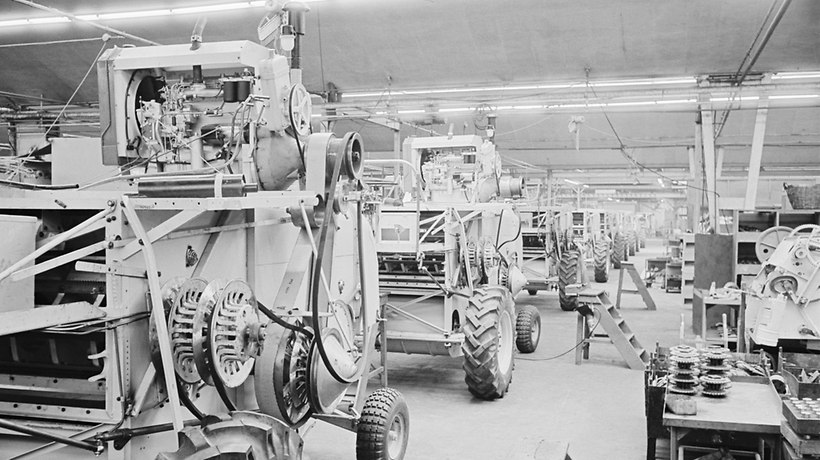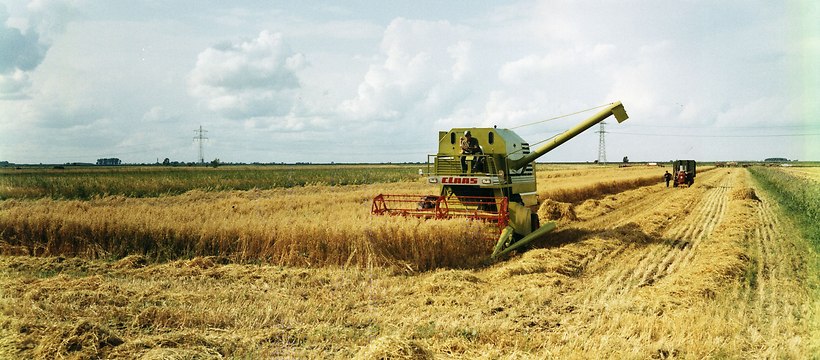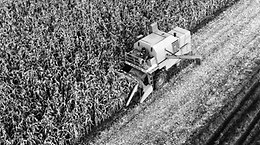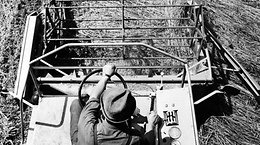

Dawn of a new design era
Up until the 1960s, combine harvester development was mainly focused on higher performance and more functionality. But now, the shape and visual appearance of machines was becoming increasingly important. The introduction of the SENATOR marked the advent of a new visual design and a seed-green colour for CLAAS combine harvesters.
1967
SENATOR / MERCATOR / PROTECTOR – elegant large combine harvesters
The market launch of the SENATOR in 1967 also introduced a new visual design for CLAAS combine harvesters. This included generously dimensioned metal safety covers and guards. The contours of the new machine were characterised by edges sloping to the rear, and the grain tank forming a single line with the engine bonnet. The CLAAS lettering was redesigned, and the machines were produced in the new seed-green colour that remains the hallmark of CLAAS products to this day. As well as making a statement on the exterior, the SENATOR also included a raft of impressive performance features. One example was hydrostatic steering. With this machine, CLAAS also became the first combine harvester manufacturer to offer a drive system with a powerband drive with coupling capability. One year after the SENATOR, the MERCATOR made its entrance. Its performance ratings were less than ambitious than in the SENATOR. The PROTECTOR model introduced in 1969 then completed the range with a lower-end model. This was the economy model in the range, fitted with a permanently attached 2.70-m cutterbar as standard equipment. As a facelift measure, it was decided to use only the name MERCATOR. Accordingly, the SENATOR became the MERCATOR 70, and the PROTECTOR combine harvesters were redubbed the MERCATOR 60 and 50 models.
1968
CONSUL/COSMOS/COMET/CORSAR – the new small models
After the CLAAS EUROPA and COLUMBUS had conquered the family farm market, over time the models began to show their age in terms of both technology and visual appearance. In 1968, CLAAS introduced the CONSUL, COSMOS and COMET, along with the CORSAR, in the middle performance segment, in 1970. All these combine harvesters came from the same model family, differing mainly in their size. For example, the CONSUL had four straw walkers, compared with the three fitted to all the other models.
GARANT – trailed, longitudinal-flow thresher
The CLAAS GARANT trailed thresher was based on the threshing mechanism of the MERCUR self-propelled harvester. It was often to be found on smaller farms, but sales were held back by the overwhelming dominance of self-propelled combine harvesters. A total of just under 1,000 machines were produced between 1968 and 1972. The CLAAS GARANT was the last trailed combine harvester produced by CLAAS.
1971
COMPACT – compact harvesters for family-owned farms
The CLAAS COMPACT was marketed from 1971 as a small combine harvester for family-owned farms. The COMPACT models 20, 25 and 30 were conceived specifically as small self-propelled machines, and were a completely new design. The objective was to facilitate combine harvesting on smaller farms as well. More than 7,000 of the affordable combine harvesters for family-owned farms were manufactured from 1971 to 1981.














